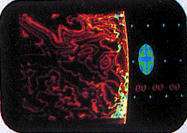- Time
- (Edited)
- Post link
It seems to me that a lot of these color ‘correction’(more like reinterpretation) samples fall victim to a lot of basic photography post processing mistakes (speaking as a professional photographer if that carries any weight (honestly it shouldn’t these days 😛)).
-The fixation on neutral whites and grays.
I remember a few years ago on this site when everyones color corrections included completely monochrome death star interiors and monochrome tie-fighters. And i knew for a fact that the models for the tie-fighters had a blue tint since i had seen them at the ‘art of star wars’ exhibition in Helsinki in 2000.
While this might seem like it makes sense in a still picture intended for display as is we have to remember that even though an object is painted white or gray it will not appear as such in almost anything except open daylight lighting conditions in outer space. Light is reflected off of every surface in the scene and tint white and gray objects.
If they used cool fluorescent lights on set or depending on what color balance film they used etc gray won’t look grey and white shouldn’t look perfectly white in almost any context which brings me to nr2.
-Maximizing the dynamic range of the shot.
There’s often a strive to maximize the utilization of the available dynamic range in every shot or scene in order to give more punch or life-like contrast to a scene. Which means people want to push the brightest pixels in the scene to close to pure white and the darkest pixels to close to pure black. And while it can mostly look good it can cause problems and inconsistency between shots of the same scene. There might not be anything close to resembling pure white light in the scene, so pushing to contrast to maximize the dynamic range will overexpose the next best thing. A lot of the white hallway shots the walls appear way way too bright. It’s also important to realize the relationship between contrast and saturation. A lot of the reason why something might appear too warm or cool can be explained by too much contrast. I often find it’s advantageous to alter luminance curves separately from saturation in order to not over-saturate (blow out) colored highlights which seems to be a constant problem in the blu-ray. I think this is the reason the desert shots of 4k83 look severely overexposed in the teaser trailer i saw.
Digitizing film is a minefield, i know since I’ve done it plenty, thankfully the restoration projects aren’t actually scanning negatives since you wouldn’t see one frame of accurate color if that was the case. Which i also think is one of the reason the older scans used for the blu-rays look so bad, especially when it comes to color accuracy, especially the magenta. Getting good digital color of a negative is very hard. Firstly you need to get rid of the extreme orange tint, and this should be done optically with colored filters since otherwise you’re just sacrificing color depth to do it digitally. And even so it’s completely open to interpretation what shade of red something was supposed to be, especially hard since if you couldn’t eliminate to orange mask optically then when inverted all your red tones will have a strong over-saturated magenta cast. Transparency film is easier somewhat since the color is mostly correct (unless it’s old and faded) but it has less captured dynamic range than negative film, so you get crushed blacks definitely and blown out highlights if you’re not careful. The contrast of the picture on the film is a lot higher on transparency film than negative, so there might be problems while digitizing unless your digitizing sensor is up to snuff.
I think most of drdre’s colors look good, but i’m mostly concerned that they are too contrasty, and could actually benefit from being a bit more darker and dull.


